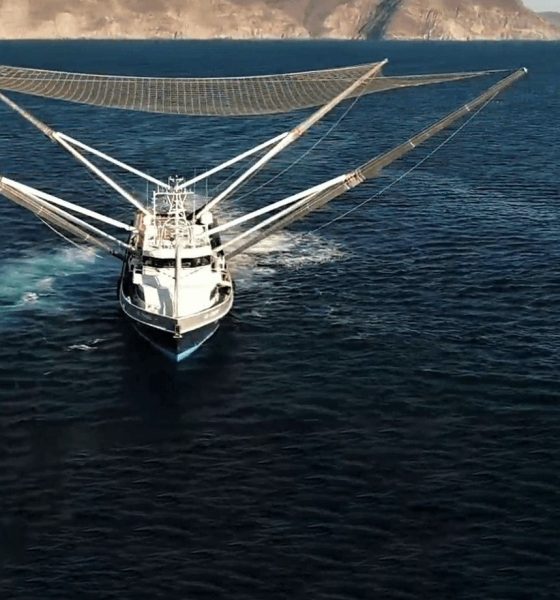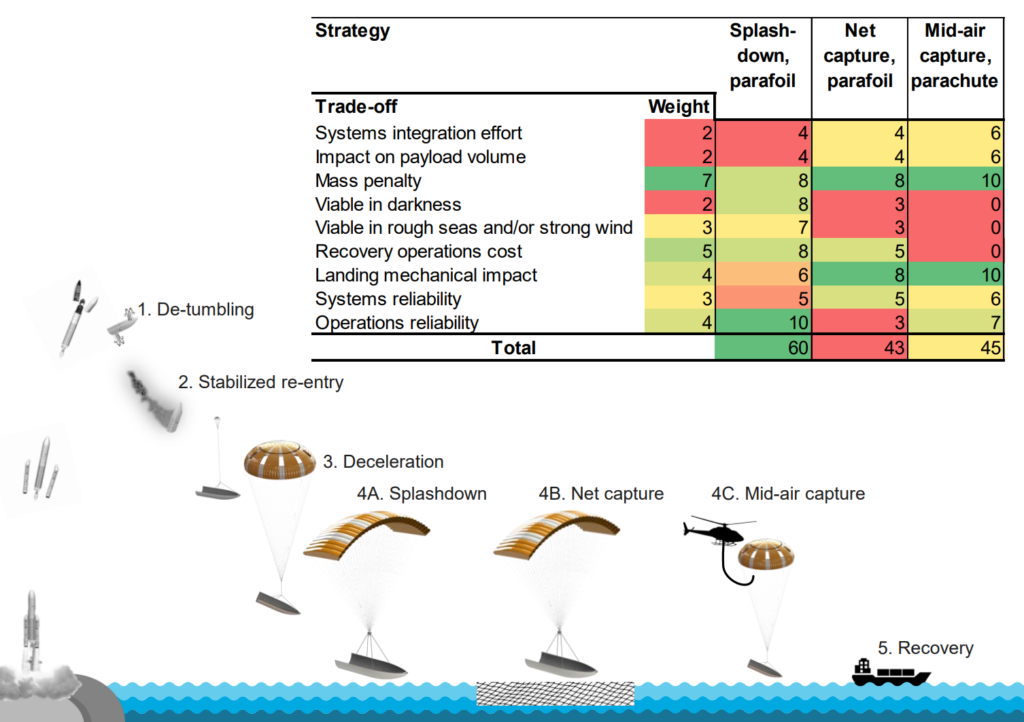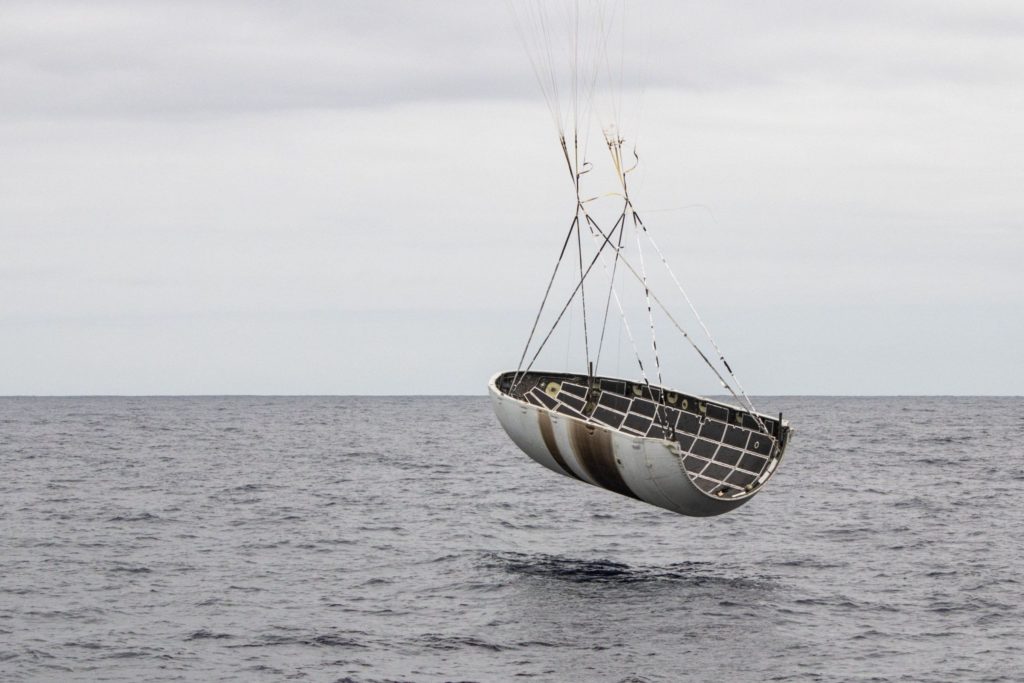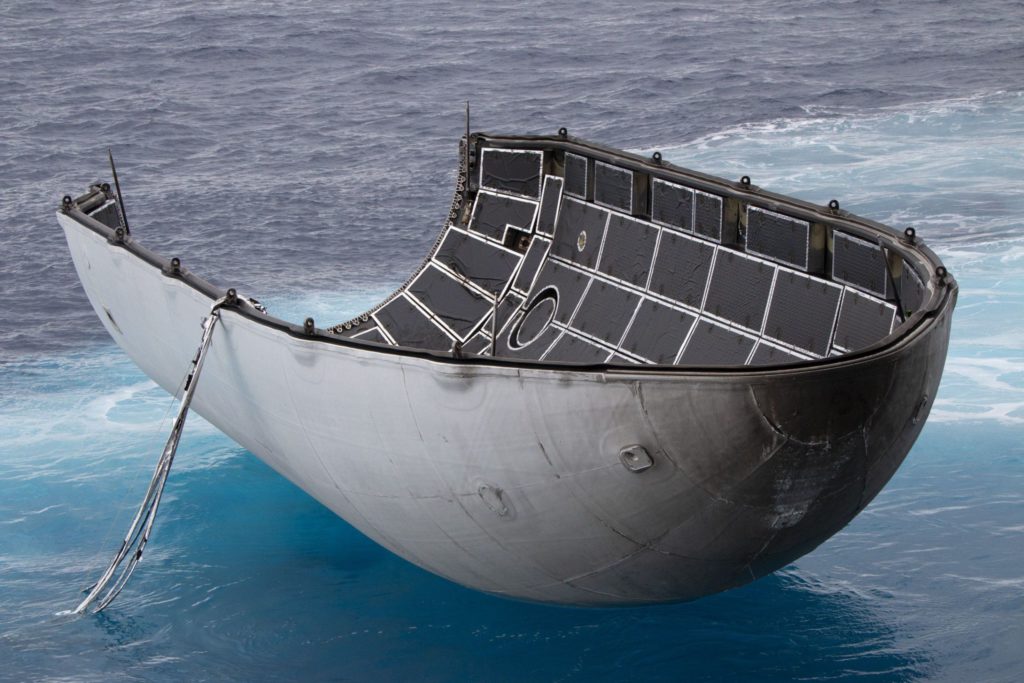

SpaceX
SpaceX CEO Elon Musk hints at new Falcon fairing reuse plan after Mr. Steven misses catch
Ninety minutes after a flawless Falcon 9 launch, landing, and payload deployment, SpaceX CEO Elon Musk took to Twitter to provide an update on the status of Mr. Steven’s latest payload fairing catch attempt.
While sadly unsuccessful on the catch front, Musk noted that both fairing halves successfully performed gentle touchdowns on the ocean surface. Far more importantly, the CEO implied that – counter to past ocean surface recoveries – SpaceX fairing engineers and technicians would instead attempt to dry and clean these particular fairing halves well enough that they can be reused on a future launch.
Falcon fairing halves missed the net, but touched down softly in the water. Mr Steven is picking them up. Plan is to dry them out & launch again. Nothing wrong with a little swim.
— Elon Musk (@elonmusk) December 3, 2018
Intriguingly, this is almost a 180-degree shift in SpaceX’s long-publicized attitude towards fairing recovery, where the implication was that fairing halves would wind up being unreusable if they could not be prevented from landing directly on the ocean surface. To some extent, this was a reasonable argument – thanks to the highly sensitive satellites they enclose, payload fairings must be able to support an internal atmosphere equivalent to a reasonably high-performance clean room while still weighing next to nothing. Falcon 9’s fairing halves weigh approximately 800 kg apiece and are large enough to enclose an entire school bus with plenty of room to spare.
However, this narrative has not exactly been mirrored by prospective competitors, especially international technology manufacturer RUAG, which produces payload fairings and other composite assemblies for both ULA (United Launch Alliance) and Arianespace, SpaceX’s only serious commercial competitors. In a study released earlier this year, a RUAG-funded cost-benefit analysis concluded that the simplest, cheapest, and easiest route to fairing reuse would be simply finding ways to effectively waterproof and clean them after soft ocean landings.
- A RUAG study concluded that waterproofing and cleaning fairings was the best possible route to reuse. (RUAG)
- Close. (SpaceX)
- Hans Koenigsmann was extremely excited about the condition of this particular fairing half, and included this photo in his IAC 2018 keynote. (SpaceX)
In a very literal sense, SpaceX has solved the hardest part of fairing recovery, essentially recovering fairing halves at all without catastrophic or irreparable structural damage in the process of reentering and landing. SpaceX already has a veritable fleet of soiled but wholly intact Falcon fairings, recovery by simply lifting them off the ocean surface after a gentle landing beneath each half’s guided parafoil. Much to its engineers’ chagrin, what SpaceX has yet to solve is the presumably extraordinarily challenging problem of guiding those parasailing fairings with extreme accuracy into Mr. Steven’s net, essentially the bullseye to end all bullseyes.
While it would be both extremely exciting to see Mr. Steven’s visually and technically fascinating net assembly be put to good use and equally disappointing to see his capabilities no longer be needed, Musk’s comment after today’s launch as nothing short of a complete change in his attitude towards fairing recovery, suggesting that SpaceX’s engineers have been working on waterproofing and thorough cleaning as a backup to Mr. Steven’s admittedly Rube Goldberg-esque fairing recovery mechanism.
Mr. Steven is stationed in the Pacific, as SpaceX will attempt to catch and recover the fairing this mission. pic.twitter.com/A7aBSJoFfc
— SpaceX (@SpaceX) December 3, 2018
Regardless of the avenue SpaceX takes, a reusable fairing is a still a reusable fairing, regardless of the gritty details of how that reusability is achieved. As Musk once rather hilariously noted, payload fairings are akin to a pallet of $5M plummeting through the air, a pallet that SpaceX would certainly like to recover. Perhaps, rather than catching that pallet of cash in a net, SpaceX can instead waterproof the bills and pick them up.
For prompt updates, on-the-ground perspectives, and unique glimpses of SpaceX’s rocket recovery fleet check out our brand new LaunchPad and LandingZone newsletters!

Elon Musk
Starlink achieves major milestones in 2025 progress report
Starlink wrapped up 2025 with impressive growth, adding more than 4.6 million new active customers and expanding service to 35 additional countries, territories, and markets.

Starlink wrapped up 2025 with impressive growth, adding more than 4.6 million new active customers and expanding service to 35 additional countries, territories, and markets. The company also completed deployment of its first-generation Direct to Cell constellation, launching over 650 satellites in just 18 months to enable cellular connectivity.
SpaceX highlighted Starlink’s impressive 2025 progress in an extensive report.
Key achievements from Starlink’s 2025 Progress
Starlink connected over 4.6 million new customers with high-speed internet while bringing service to 35 more regions worldwide in 2025. Starlink is now connecting 9.2 million people worldwide. The service achieved this just weeks after hitting its 8 million customer milestone.
Starlink is now available in 155 markets, including areas that are unreachable by traditional ISPs. As per SpaceX, Starlink has also provided over 21 million airline passengers and 20 million cruise passengers with reliable high-speed internet connectivity during their travels.
Starlink Direct to Cell
Starlink’s Direct to Cell constellation, more than 650 satellites strong, has already connected over 12 million people at least once, marking a breakthrough in global mobile coverage.
Starlink Direct to Cell is currently rolled out to 22 countries and 6 continents, with over 6 million monthly customers. Starlink Direct to Cell also has 27 MNO partners to date.
“This year, SpaceX completed deployment of the first generation of the Starlink Direct to Cell constellation, with more than 650 satellites launched to low-Earth orbit in just 18 months. Starlink Direct to Cell has connected more than 12 million people, and counting, at least once, providing life-saving connectivity when people need it most,” SpaceX wrote.
Elon Musk
Starlink passes 9 million active customers just weeks after hitting 8 million
The milestone highlights the accelerating growth of Starlink, which has now been adding over 20,000 new users per day.

SpaceX’s Starlink satellite internet service has continued its rapid global expansion, surpassing 9 million active customers just weeks after crossing the 8 million mark.
The milestone highlights the accelerating growth of Starlink, which has now been adding over 20,000 new users per day.
9 million customers
In a post on X, SpaceX stated that Starlink now serves over 9 million active users across 155 countries, territories, and markets. The company reached 8 million customers in early November, meaning it added roughly 1 million subscribers in under seven weeks, or about 21,275 new users on average per day.
“Starlink is connecting more than 9M active customers with high-speed internet across 155 countries, territories, and many other markets,” Starlink wrote in a post on its official X account. SpaceX President Gwynne Shotwell also celebrated the milestone on X. “A huge thank you to all of our customers and congrats to the Starlink team for such an incredible product,” she wrote.
That growth rate reflects both rising demand for broadband in underserved regions and Starlink’s expanding satellite constellation, which now includes more than 9,000 low-Earth-orbit satellites designed to deliver high-speed, low-latency internet worldwide.
Starlink’s momentum
Starlink’s momentum has been building up. SpaceX reported 4.6 million Starlink customers in December 2024, followed by 7 million by August 2025, and 8 million customers in November. Independent data also suggests Starlink usage is rising sharply, with Cloudflare reporting that global web traffic from Starlink users more than doubled in 2025, as noted in an Insider report.
Starlink’s momentum is increasingly tied to SpaceX’s broader financial outlook. Elon Musk has said the satellite network is “by far” the company’s largest revenue driver, and reports suggest SpaceX may be positioning itself for an initial public offering as soon as next year, with valuations estimated as high as $1.5 trillion. Musk has also suggested in the past that Starlink could have its own IPO in the future.
News
SpaceX shades airline for seeking contract with Amazon’s Starlink rival

SpaceX employees, including its CEO Elon Musk, shaded American Airlines on social media this past weekend due to the company’s reported talks with Amazon’s Starlink rival, Leo.
Starlink has been adopted by several airlines, including United Airlines, Qatar Airways, Hawaiian Airlines, WestJet, Air France, airBaltic, and others. It has gained notoriety as an extremely solid, dependable, and reliable option for airline travel, as traditional options frequently cause users to lose connection to the internet.
Many airlines have made the switch, while others continue to mull the options available to them. American Airlines is one of them.
A report from Bloomberg indicates the airline is thinking of going with a Starlink rival owned by Amazon, called Leo. It was previously referred to as Project Kuiper.
American CEO Robert Isom said (via Bloomberg):
“While there’s Starlink, there are other low-Earth-orbit satellite opportunities that we can look at. We’re making sure that American is going to have what our customers need.”
Isom also said American has been in touch with Amazon about installing Leo on its aircraft, but he would not reveal the status of any discussions with the company.
The report caught the attention of Michael Nicolls, the Vice President of Starlink Engineering at SpaceX, who said:
“Only fly on airlines with good connectivity… and only one source of good connectivity at the moment…”
CEO Elon Musk replied to Nicolls by stating that American Airlines risks losing “a lot of customers if their connectivity solution fails.”
American Airlines will lose a lot of customers if their connectivity solution fails
— Elon Musk (@elonmusk) December 14, 2025
There are over 8,000 Starlink satellites in orbit currently, offering internet coverage in over 150 countries and territories globally. SpaceX expands its array of satellites nearly every week with launches from California and Florida, aiming to offer internet access to everyone across the globe.
Currently, the company is focusing on expanding into new markets, such as Africa and Asia.










